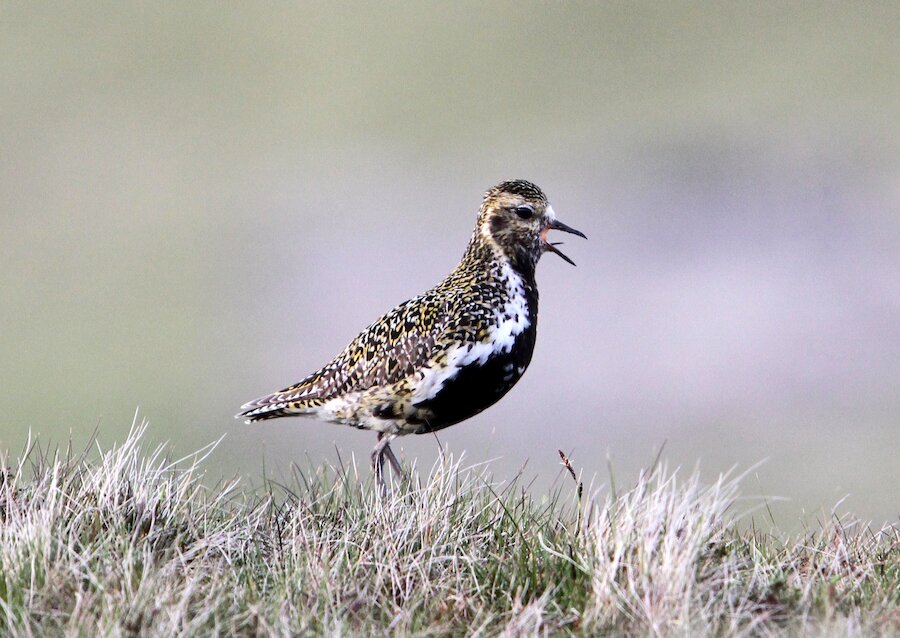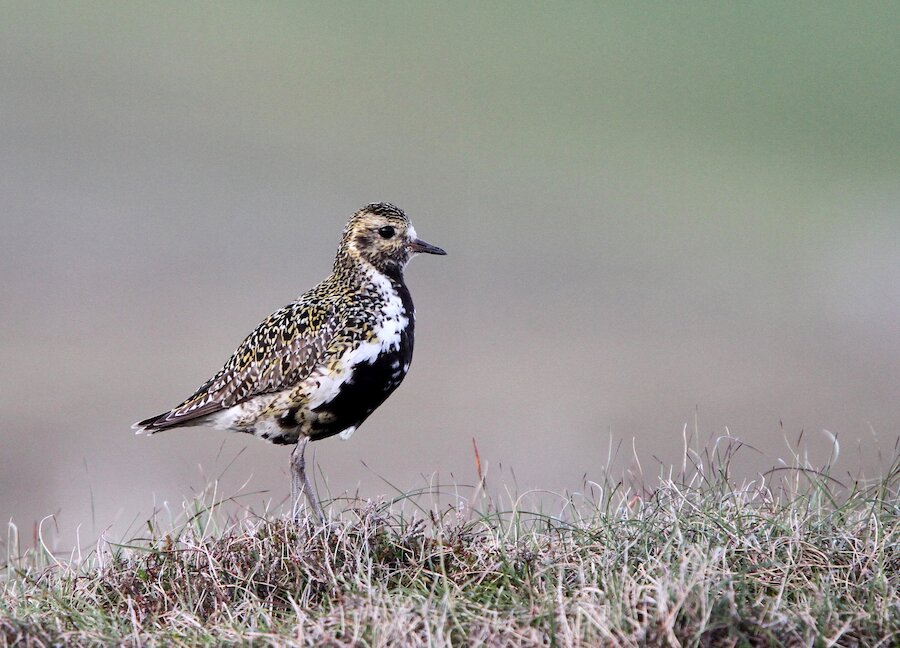Shetland is home to critically important populations of breeding upland waders – it’s the most important place in Britain for whimbrels alone, a species that’s in steep decline nationally. Scotland is the heartland for the British population of golden plover, and Shetland in particular is home to some of the highest densities of this shy wader. But where are they? They’re not immediately obvious. To see them we need to take a pace off the beaten track, travel the path less trodden. We need to take to the hills.
Heading into Shetland’s uplands at this time of year is to step into another world, a place in which we can only ever be fleeting visitors. This is a place of lush sphagnum bogs, purple moor grass, wiry heather and drifts of snowy bog cotton. This is an undisturbed vastness, an expanse of magnificent upland habitat. This is the home of whimbrels and plovers.
Nesting in the shadows of Arctic skuas
Whimbrels are like pocket curlews, smaller and slimmer than their large cousins, humbug-headed with a distinctive stripe on their crown, their bills less outlandish. They nest in the shadow of Arctic skua colonies, better to gain some protection from sharp-eyed hooded crows and ravens that might rob their nests of eggs.
And those golden plovers? Where a whimbrel is a master of subtle camouflage, all broken buff stripes and flecks, a golden plover is an outrageous thing at this time of year. Their underparts are black as soot, while a bold, confident brushstroke of white runs from head to tail down their flanks. But it is their upperparts that lend them their name – a rich golden mantle offset with counterpoints of jet black and diamond white. Their sad, mournful call alerts you to their presence nearby… and then there the bird is, stood alertly on top of a rise in the ground, watchful. Seen in the early morning sunlight, in the photographer’s so-called golden hour, they are like a phoenix flaming against the muted greys and greens of lichen and moss.
They are good parents, mindful of any threat to their newly hatched young. However, few parents in the uplands can match another plover for doting care – ringed plovers make their nests in patches of bare ground, and are often found when one walks up an old track onto the hill, following in the footsteps of generations of crofters who passed this way heading to the peat banks.



